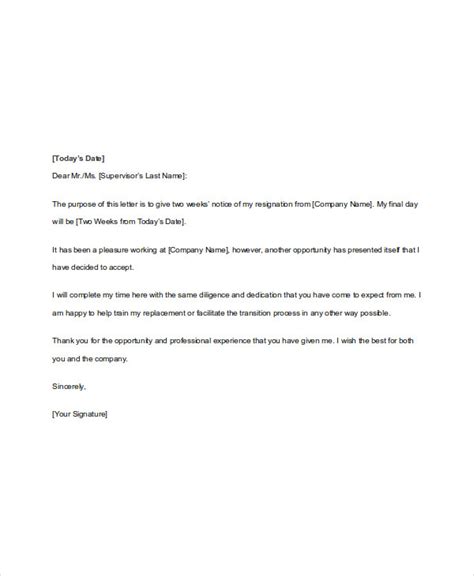Decoding Two Weeks' Notice: Understanding Its Purpose

When it comes to resigning from a job, giving a two weeks’ notice is a common practice. However, many employees are not sure about the purpose of a two weeks’ notice and how to handle it. In this blog post, we will decode the two weeks’ notice and provide a comprehensive guide on how to use it effectively.
What is a Two Weeks’ Notice?
A two weeks’ notice is a formal letter that an employee gives to their employer, informing them of their intention to resign from their job. The letter is usually given at least two weeks before the employee’s last day of work. The purpose of the notice is to give the employer enough time to find a replacement for the departing employee.
Why is a Two Weeks’ Notice Important?
A two weeks’ notice is important for several reasons:
- Professionalism: Giving a two weeks’ notice is a professional way to resign from a job. It shows that you respect your employer and the company and that you are willing to help with the transition process.
- Etiquette: A two weeks’ notice is a common courtesy that is expected in most workplaces. It allows the employer to make necessary arrangements and avoids leaving them in a difficult situation.
- Networking: Giving a two weeks’ notice is an opportunity to maintain positive relationships with your employer and colleagues. It can lead to future job opportunities or references.
How to Write a Two Weeks’ Notice?
Here are the steps to follow when writing a two weeks’ notice:
- Address the letter: Begin the letter by addressing it to your supervisor or manager.
- State your intention: Clearly state in the first paragraph that you are resigning from your job and the date of your last day of work.
- Express gratitude: In the second paragraph, express your gratitude for the opportunities and experiences you gained while working at the company.
- Offer assistance: In the third paragraph, offer to assist with the transition process and provide contact information for follow-up.
- Closing: End the letter with a polite closing and your signature.
How to Handle a Two Weeks’ Notice?
Here are the steps to follow when handling a two weeks’ notice:
- Accept the resignation: Acknowledge the employee’s resignation and thank them for their contributions to the company.
- Discuss the transition: Schedule a meeting with the employee to discuss the transition process and any outstanding tasks or projects.
- Inform the team: Inform the team about the employee’s departure and the plan for finding a replacement.
- Provide feedback: Provide feedback to the employee on their performance and offer to serve as a reference.
FAQs
Q: Is a two weeks’ notice mandatory?
A: No, a two weeks’ notice is not mandatory. However, it is a common practice and considered a professional courtesy.
Q: Can I give more than two weeks’ notice?
A: Yes, you can give more than two weeks’ notice if you want to provide more time for the transition process.
Q: Can I rescind my two weeks’ notice?
A: Yes, you can rescind your two weeks’ notice if you change your mind. However, it may affect your relationship with your employer and the company’s trust in you.
Q: Can my employer terminate me after I give a two weeks’ notice?
A: Yes, your employer can terminate you after you give a two weeks’ notice. However, it is rare and usually occurs in cases of misconduct or performance issues.
Q: Should I mention the reason for my resignation in the two weeks’ notice?
A: No, you are not required to mention the reason for your resignation in the two weeks’ notice. However, if you want to provide feedback or suggest improvements, you can do so in a separate meeting or email.
Decoding a two weeks’ notice can be challenging, but it is an essential part of the job resignation process. By following the steps outlined in this blog post, you can ensure a smooth and professional transition.
